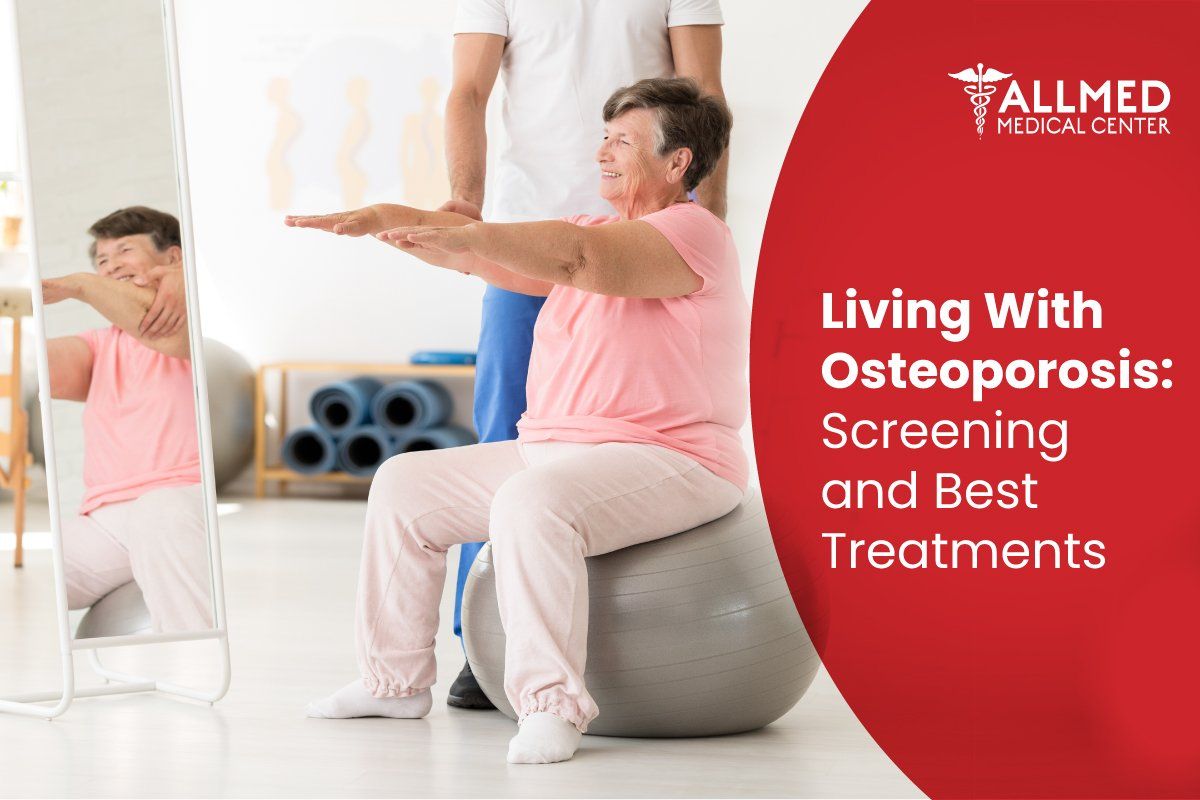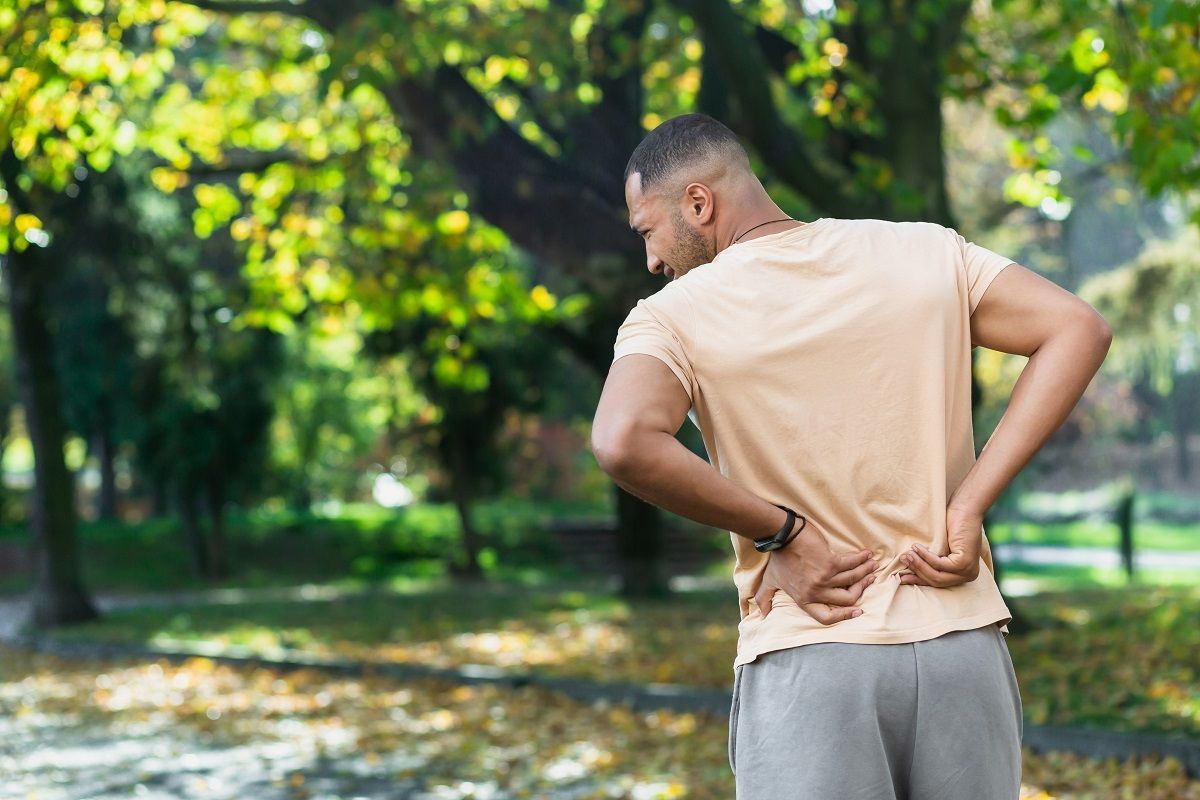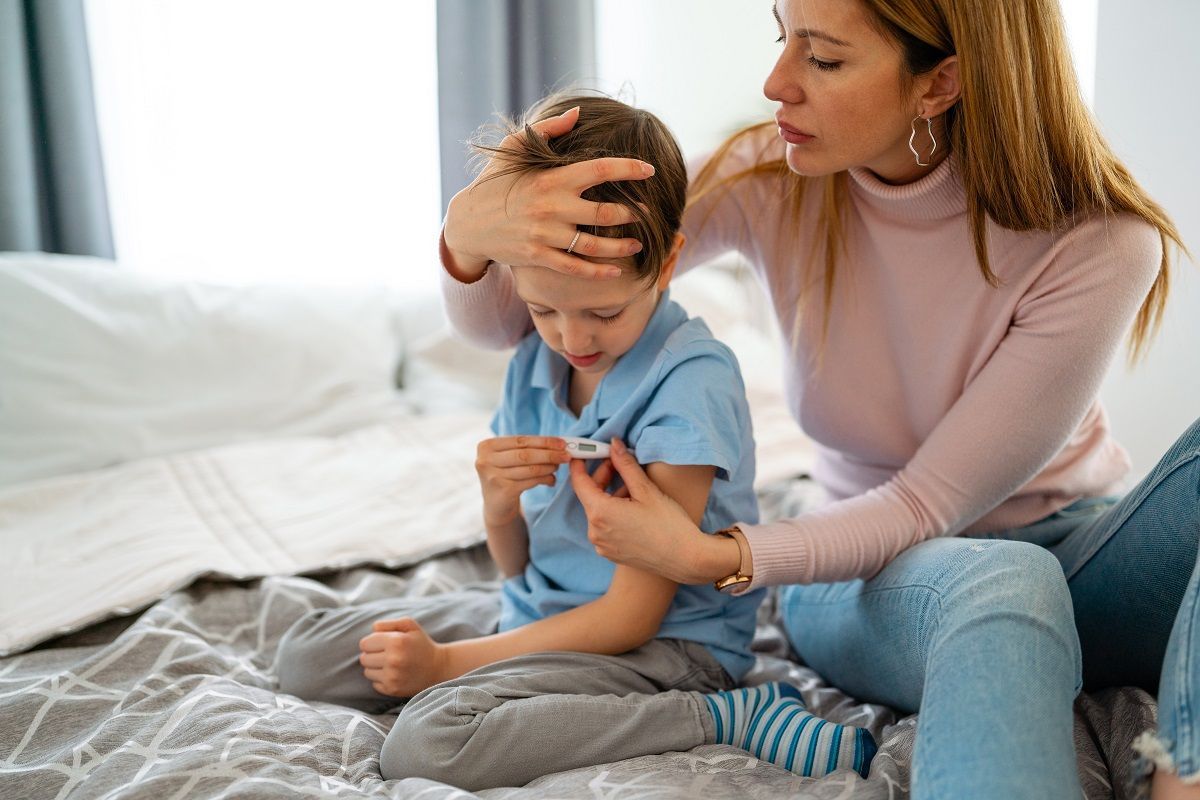
We Proudly Accept Medi-Cal and Medicare
Write your caption hereButton
Now Accepting Walk-ins!
Write your caption here

We Proudly Accept Medi-Cal and Medicare
Write your caption hereButton
Now Accepting Walk-ins!
Write your caption here

What is Osteoporosis?
Osteoporosis is one of the most common metabolic bone diseases in the United States. The effects of osteoporosis can be devastating on a physical, psychological, and economic level. Because it is clinically silent, it is often overlooked and undertreated.
How Does Osteoporosis Occur?
A bone is a living tissue. Your body breaks old bone tissue down as you age and replaces it with new bone tissue. Bone mass stops increasing after age 30, so preserving as much bone as possible is the best way for the body to maintain bone health. Over time, greater bone loss occurs as people enter their 40s and 50s.
When viewed closely, the inside of the bone resembles a honeycomb. Osteoporosis causes the spaces in this honeycomb to grow more prominent, and the bone that forms the honeycomb shrinks. As your bones age, their outer shells thin as well. Progressive thinning of the outer shells results in weaker bones.
Is Osteoporosis Common?
Osteoporosis is a common disease affecting an estimated 10 million Americans. Another 44 million suffer from low bone density, putting them at greater risk for osteoporosis. As a result, half of all adults over 50 are at risk of bone fractures. Despite all that, more than 80% are undiagnosed and untreated.
Who Is At Risk of Osteoporosis?
People of any age can get osteoporosis, but women are more likely to experience it. However, osteoporosis also affects men. Additionally, White and Asian women are most likely to have osteoporosis.
Other factors that may increase your risk for osteoporosis include:
- Body size. Osteoporosis is more likely to develop in slender, thin-boned women and men.
- Changing hormone levels. Women of menopause are at increased risk of developing osteoporosis due to low estrogen stores.
- Nutrition. Vitamin D and calcium are essential for bone homeostasis. A lack of either or both vitamins and minerals could contribute to developing osteoporosis.
- Living a sedentary lifestyle. Prolonged inactivity accelerates bone loss.
- Drinking excessive amounts of alcohol chronically. Chronic alcohol drinking can have harmful effects on your overall bone health.
- Smoking cigarettes. Research has shown that nicotine can increase bone resorption.
What Are The Signs and Symptoms of Osteoporosis?
Often referred to as the "silent disease," osteoporosis is not revealed until a fracture occurs. Two-thirds of vertebral fractures are painless, but patients may complain of stooped posture and height loss.
The following symptoms may accompany painful vertebral fractures:
- A fall or minor trauma may trigger an episode of acute pain.
- Localized pain occurs at a particular vertebral level.
- Pain is usually described as sharp, nagging, or dull.
- There are times when movement triggers pain, and in some cases, the pain spreads to the abdomen.
- Pain is often accompanied by muscle spasms in the lower back triggered by activity and relieved by lying on the back.
In patients who have suffered a hip fracture, the following symptoms may occur:
- During weight bearing, or when trying to weight bear on an involved extremity, the groin, buttocks, and thighs may experience pain.
- Limited range of motion of the hips.
Osteoporosis: How Is It Diagnosed?
A bone health screening performed by your healthcare provider can help you detect any decrease in your bone density. Dual-energy X-ray absorptiometry or DEXA scans measure bone mineral density (BMD). The results of a DEXA scan interpret bone mineral density by calculating its T-scores. Your t-score is then compared to controlled test subjects at their peak BMD.
Based on WHO criteria, an average T-score value is within one standard deviation (SD) of a healthy young adult's mean BMD value.
There are three categorizations that help diagnose if you are at risk for osteoporosis:
- T-scores between -1.5 and -2.5 SD indicate osteopenia.
- T-scores of less than -2.5 SD indicate osteoporosis.
- T-scores less than -2.5 SD with fragility fractures indicate severe osteoporosis.
Is There A Cure for Osteoporosis?
Osteoporosis cannot be completely reversed and is not considered curable. However, management is achievable with exercise, vitamins, minerals, and medications. It is often recommended that you exercise and take supplements to prevent osteoporosis. Activities that involve weight-bearing, resistance, and balance are all critical.
When Is the Best Time to Treat Osteoporosis With Medication?
Having a T-score of -2.5 or lower, such as -3.3 or -3.8, should consider beginning therapy with medications to help reduce your risk of fracture. Often, women with osteopenia, which is a milder form of osteoporosis, need treatment.
What Medications Are Available To Manage Osteoporosis?
Treatment for osteoporosis includes a variety of medications. It will be up to your healthcare provider to determine what is best for you. There is no single best medication for treating osteoporosis. Further, the 'best' treatments are custom-made for each individual.
Here are different medications that your physician will give you for your osteoporosis:
Hormone and hormone-related therapy
In women with menopause, hormone therapy is the first-line option. The administration of low-dose oral contraceptives restores bone turnover and normal bone density.
Bisphosphonates
Treatment with bisphosphonates prevents the body from reabsorbing more bone tissue. This helps decrease the progression of osteoporosis.
Biologics
When other treatments fail, biologics such as Denosumab are often used. In addition to reducing bone resorption, Denosumab increases bone density and reduces fractures.
Anabolic agents
People with osteoporosis can build bone with anabolic agents. Approved anabolic agents include:
- Among postmenopausal women at a high fracture risk, Romosumab-aqqg (Evenity®) has been approved for use.
- Both Teriparatide (Forteo®) and Abaloparatide (Tymlos®) increase bone density similarly to parathyroid hormones.
How Can I Prevent Osteoporosis?
Age is no barrier to bone health. Therefore, foods rich in calcium and vitamin D are crucial for healthy bones. Weight training, walking, hiking, jogging, and climbing stairs can also prevent osteoporosis.
It is advisable for those with osteoporosis to avoid twisting or bending their spines, such as sit-ups and golf swings.
What Can You Do if You Are Living With Osteoporosis?
You can still lead an active lifestyle if you avoid certain habits that may worsen osteoporosis. Take all the necessary precautions to stay safe inside and outside your home.
You can prevent falls in your home by following these steps:
- Ensure your floors are clutter-free by removing throw rugs and loose cords.
- Your lighting should be bright enough so that you can see clearly.
- Clean up spills immediately.
- Use stairway railings and grab bars in the bathroom.
You can prevent falls outside by following these steps:
- Ensure that all areas outside your home have adequate lighting.
- Keep your hands free by using a backpack or other type of bag.
- Ensure that areas outside are in good repair and clutter-free.
- Make sure you wear non-slip shoes.
Get Your Bones Screened Now
Early detection is early prevention, and by getting your bones screened for signs of osteoporosis, early treatment can be given to you. If you are searching for a "health clinic near me," look no future than AllMed Medical Center; our medical clinic provides a comprehensive and holistic approach to osteoporosis. DEXA scan is available here at our clinic, helping you assess your bones and prevent further deterioration due to osteoporosis.
Call our hotline today and schedule an appointment. You can reach us by dialing 1-8333-255-6332. You can also look for your preferred clinic by clicking this
link.
AllMed Medical CentersServing
Greater Sacramento
Allmed Medical Center | All Rights Reserved.










